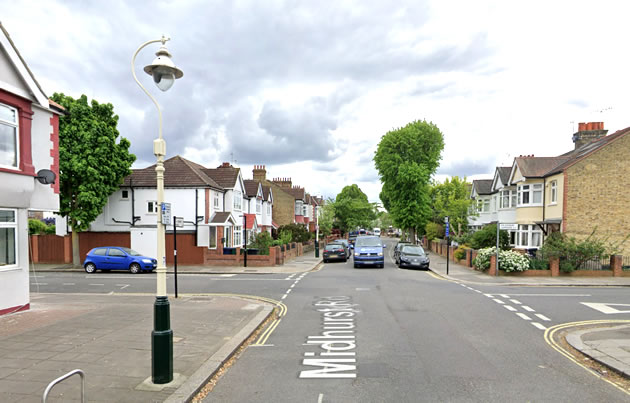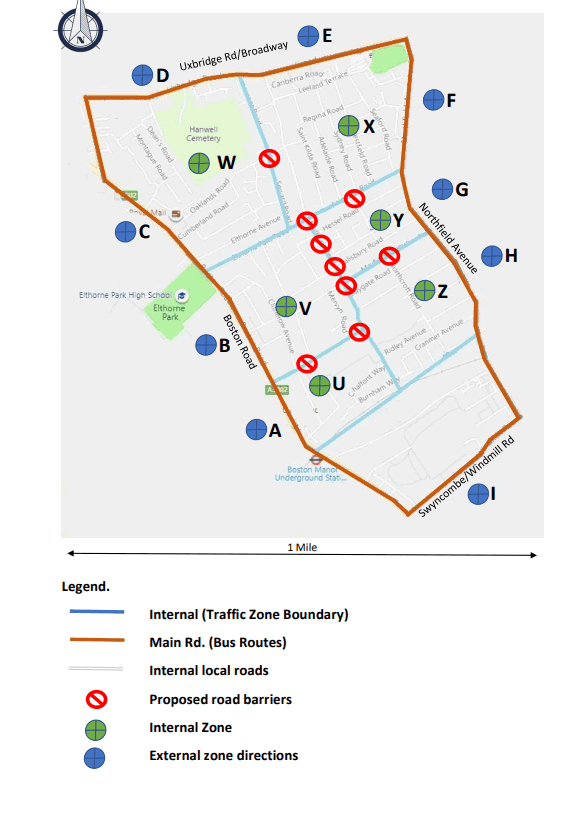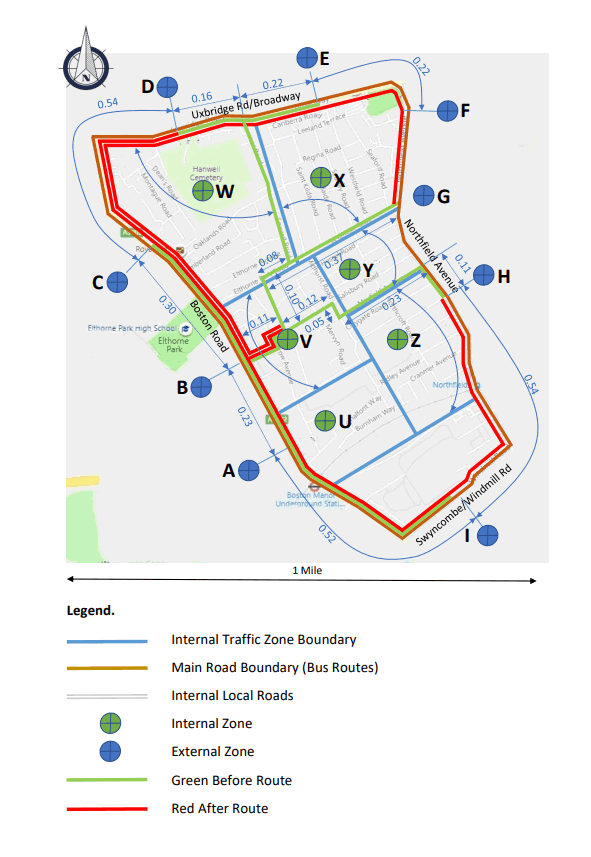Independent Report Says LTN Will Generate More Traffic
Analysis shows Ealing Council's plans would increase journeys by 52%

One of the affected junctions on Midhurst Road. Picture: Google Streetview
An independent analysis of one of Ealing Council’s Low Traffic Neighbourhood (LTN) schemes has concluded that it could increase the distance travelled by vehicles in the area by 52%
The report looks in detail at the plan for the Midhurst and Leighton neighbourhoods and analyses car and van accessibility changes due to intended road closures. It was under taken by R.Witt who is a member of the Institution of Civil Engineer and specialises in traffic modelling.
It is concluded that the main impact is the change of vehicle mileage between local internal and the outer boundary roads of Boston, Broadway-Uxbridge, Northfields and Swyncombe and Windmill roads.
The report acknowledges that there will be a significant decrease in traffic mileage on the internal roads within the scheme boundary with a fall of 59% but this will be more than offset by an increase on the main boundary roads of 187%.
Overall traffic mileage in the area is expected to increase by 52% generated wholly by the road closures.
The first map shows neighbourhood area with six zones labelled from ‘U’ to ‘Z’ surrounded by nine external destination zones labelled from ‘U’ to ‘Z’ surrounded by nine external destination zones labelled from ‘A’ to ‘H’. The outer main roads forming the boundary are coloured brown.

The second map shows the method of analysis, which allows before and after travel distances between zone ‘V’ and the nine external zones measured; the green routes are the ‘before’ routes and the ‘red’, the after-closure distances. The ‘green’ routes crisscross the internal area to external zones whereas ‘red’ routes are mainly boundary main roads.

Councillor David Millican, Conservative representing Northfield ward, has written to Ealing Council chief executive and council leader referencing this report and urging them to stop all the schemes until a comprehensive analysis is undertaken along with a full consultation.
He said, "As a cyclist I am the first to encourage us to cycle and walk more than to use our cars. However I am angry that the traffic schemes are being introduced without any consultation of local residents and no analysis of the use of the road, whether by local residents, the numerous delivery vans we all now generate, or genuine through-traffic, which we would all be happy to stop.”
He added that the report shows that the plan as it stands will increase congestion and pollution in the area, precisely what it was intended to stop and demanded that the schemes should be stopped until residents say they want them introduced.
A council spokesperson said,“The report by R Witt was forwarded to the council for comment by Councillor David Millican on Wednesday 4 August, and a full response has been provided to Councillor Millican. In summary, the modelling used in the report appears to exaggerate the volume of traffic that is likely to drive due to a flawed methodology. Experience from other LTNs, for example in Waltham Forest, shows that traffic on boundary roads of an LTN showed no significant increase, despite concerns from many in advance that it would. “
The ETOs allow Ealing Council to implement schemes without advertising them. There will be a 6 month trial period of the restrictions after which the impact of the changes will be reviewed.
Documents giving more detailed particulars of each Order are available by e-mail from trafficnotices@ealing.gov.uk.
If you want to make a comment on any scheme the council officers responsible can be reached on COVIDtransport@ealing.gov.uk and the senior councillor responsible is Cllr Mik Sabiers SabiersM@ealing.gov.uk.
August 11, 2020